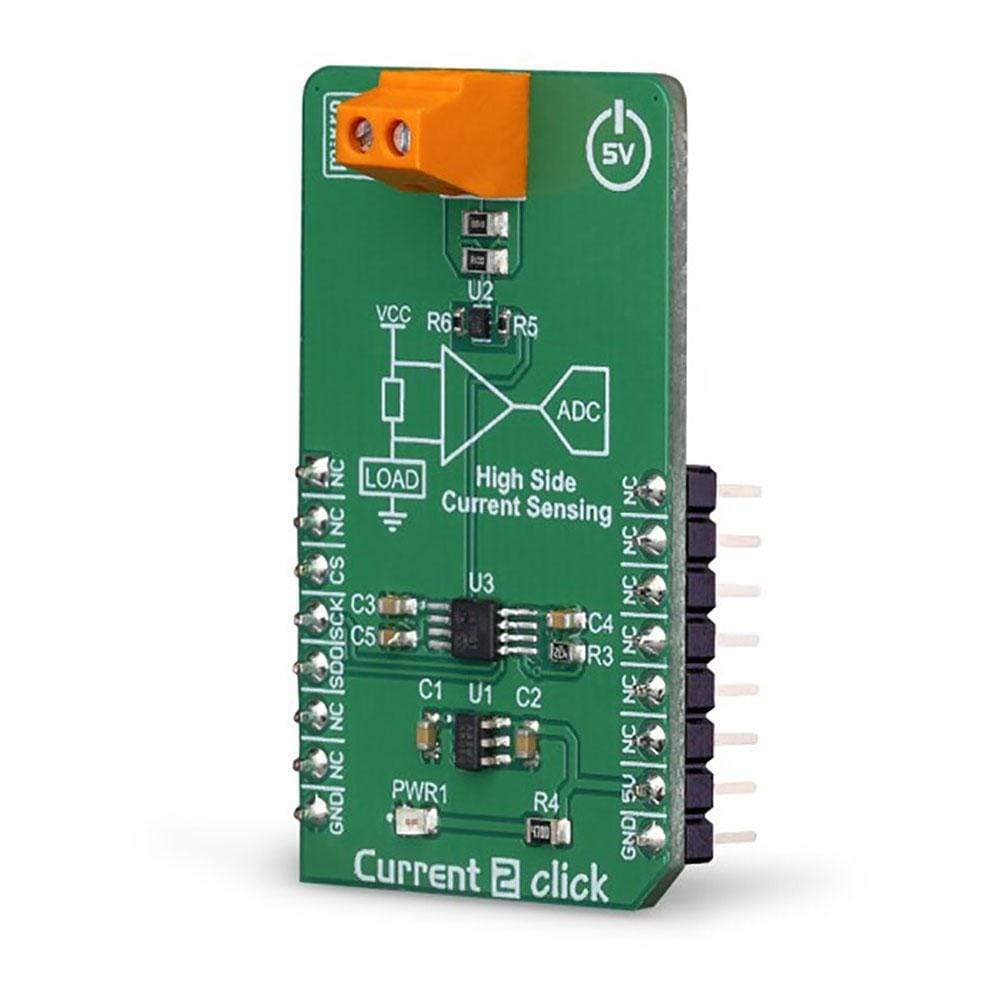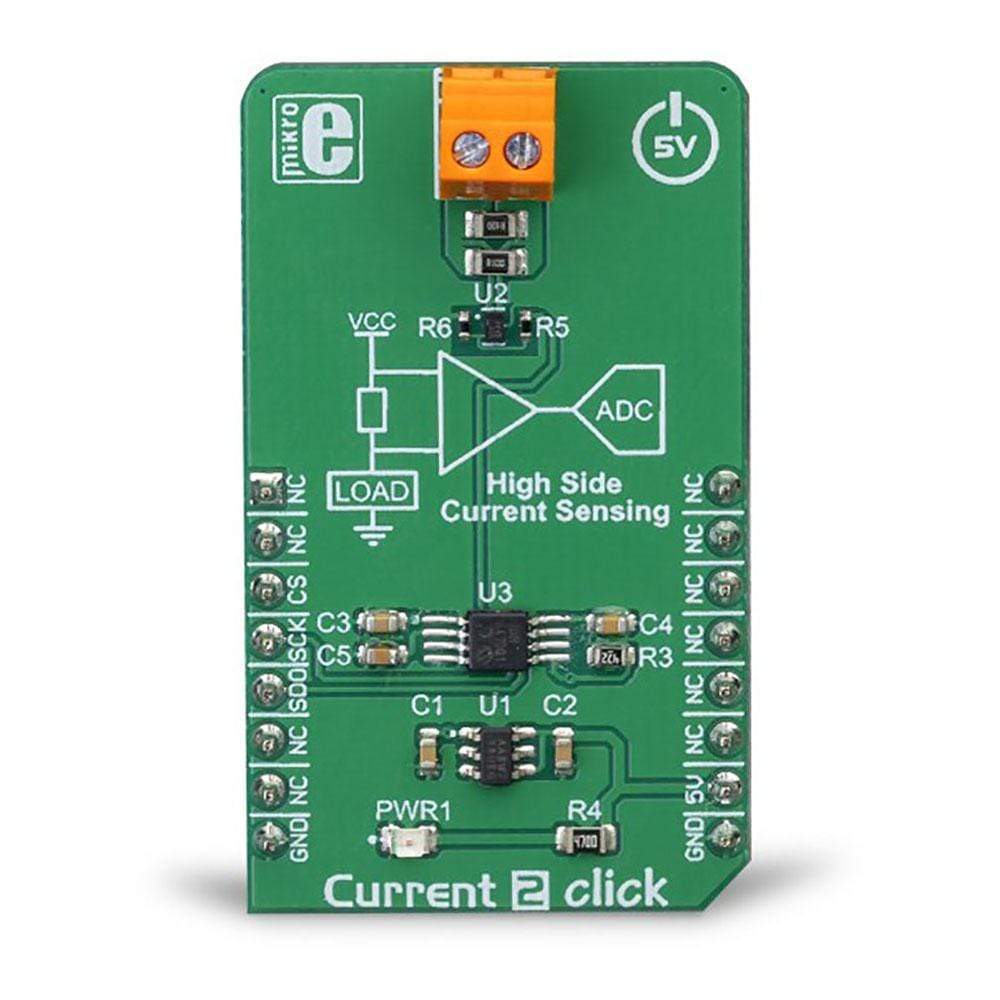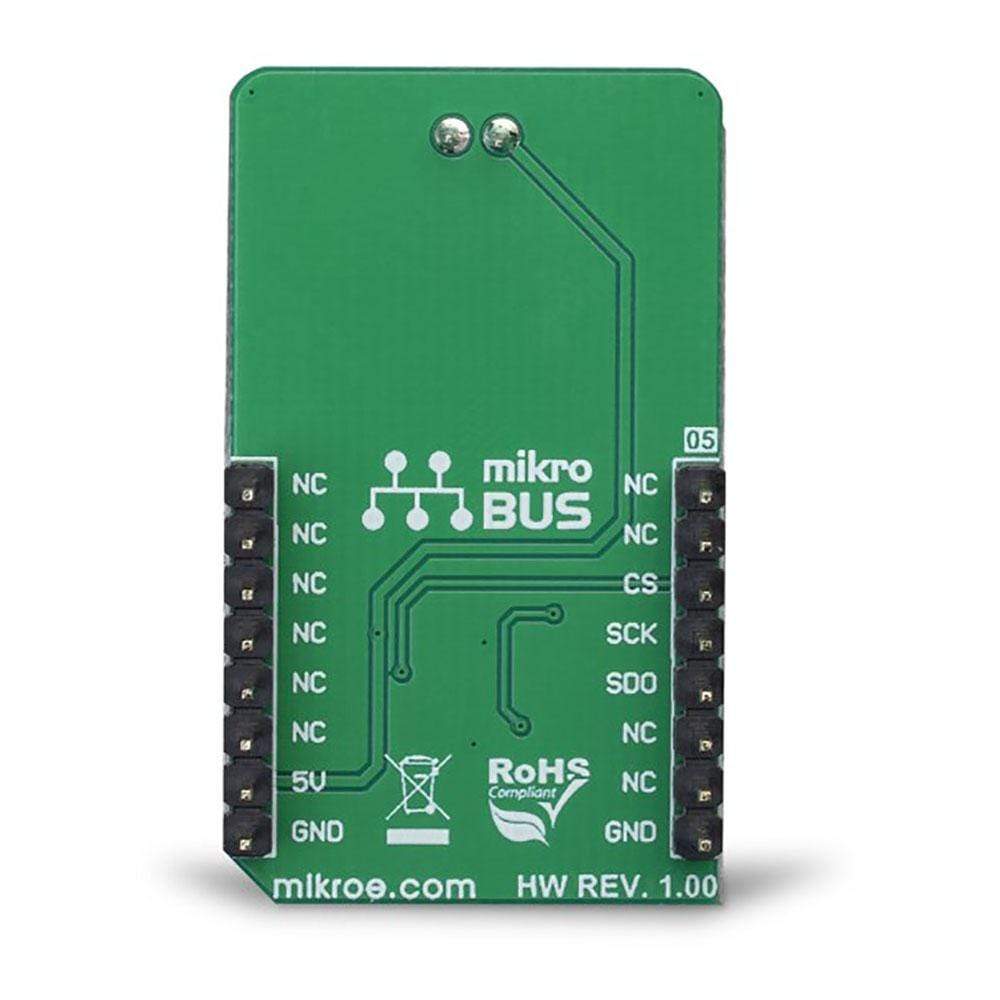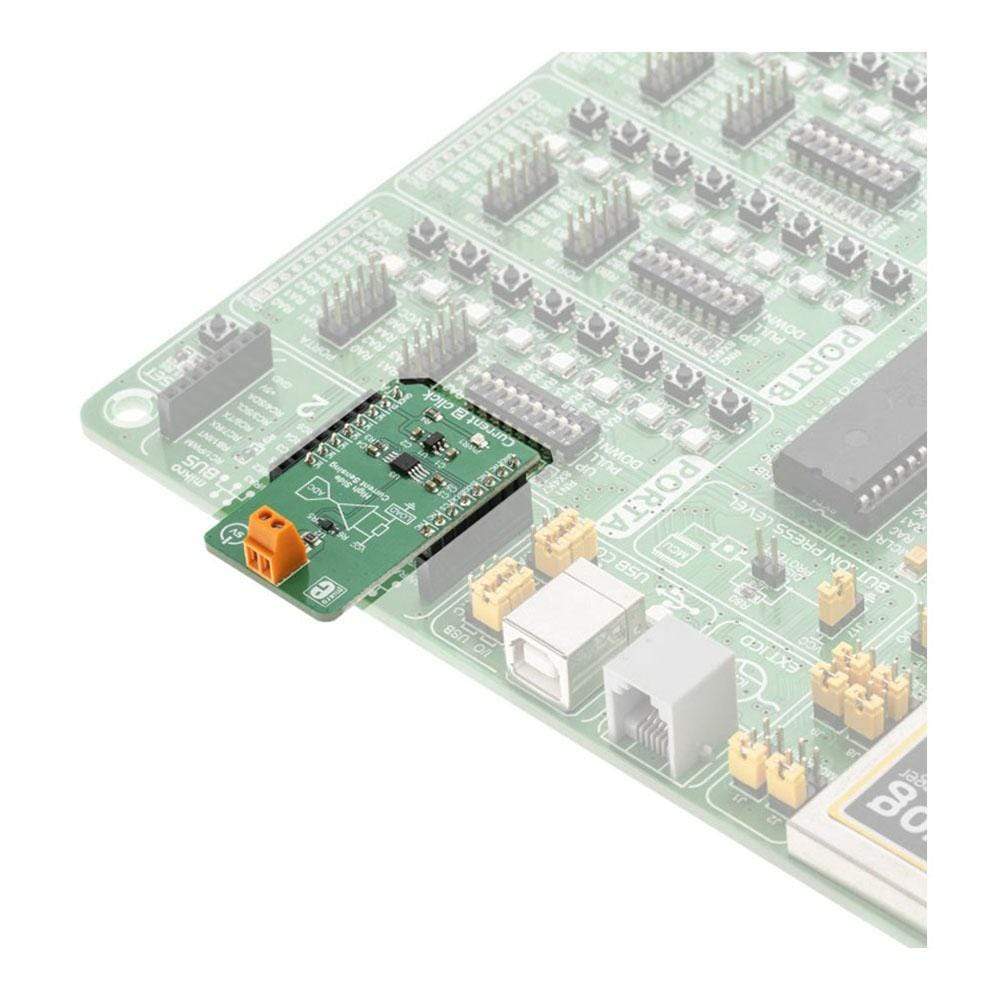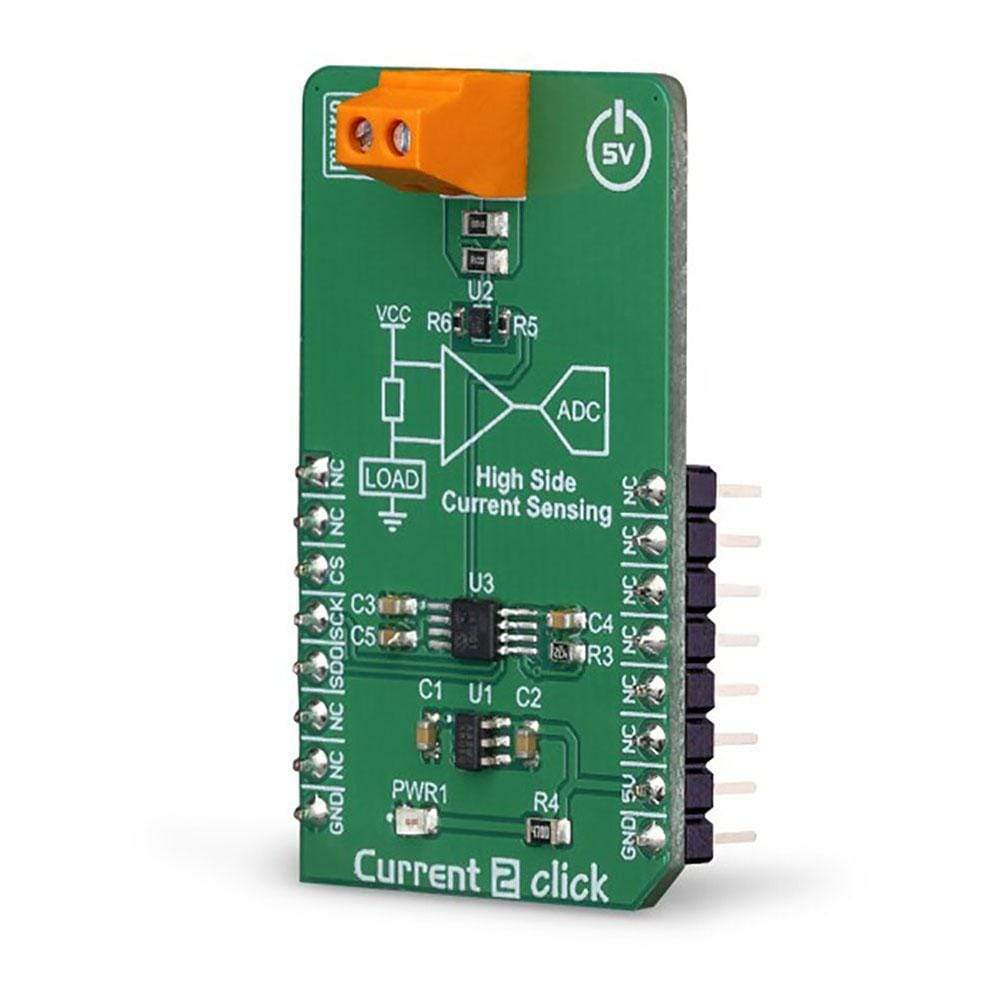
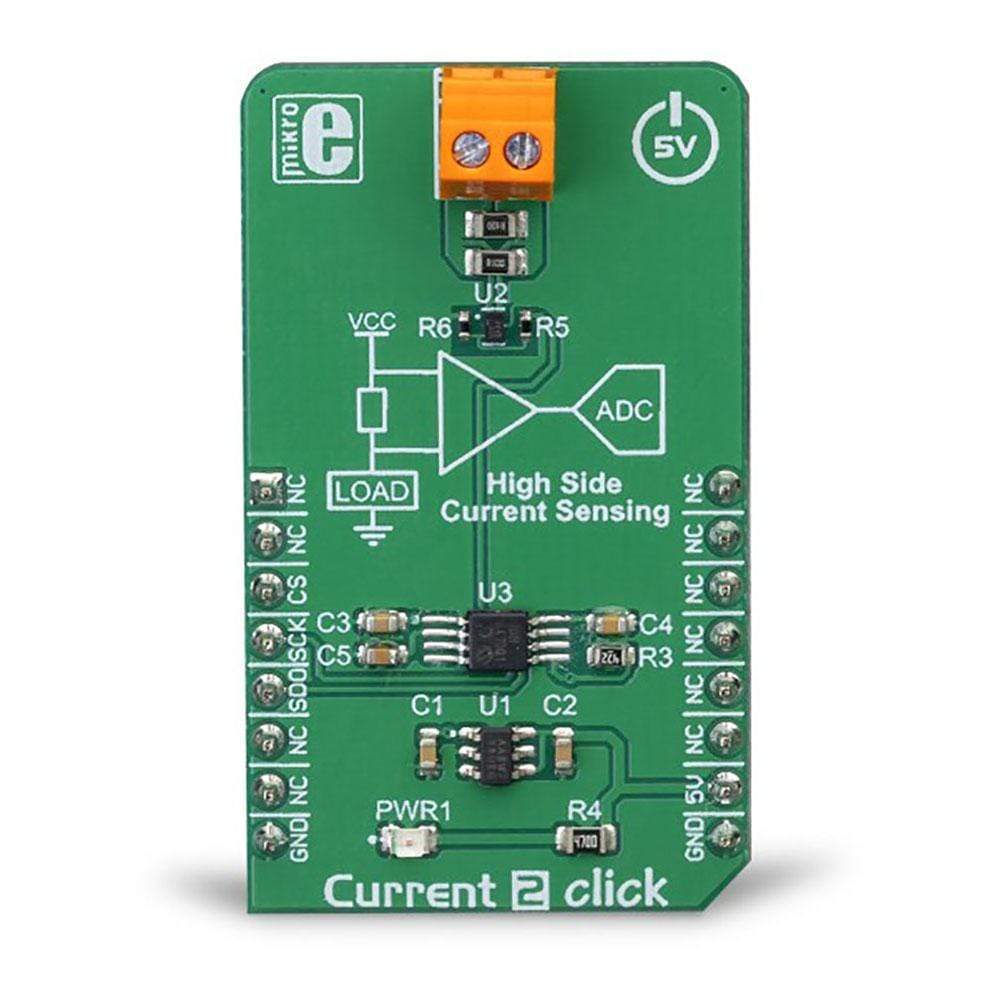
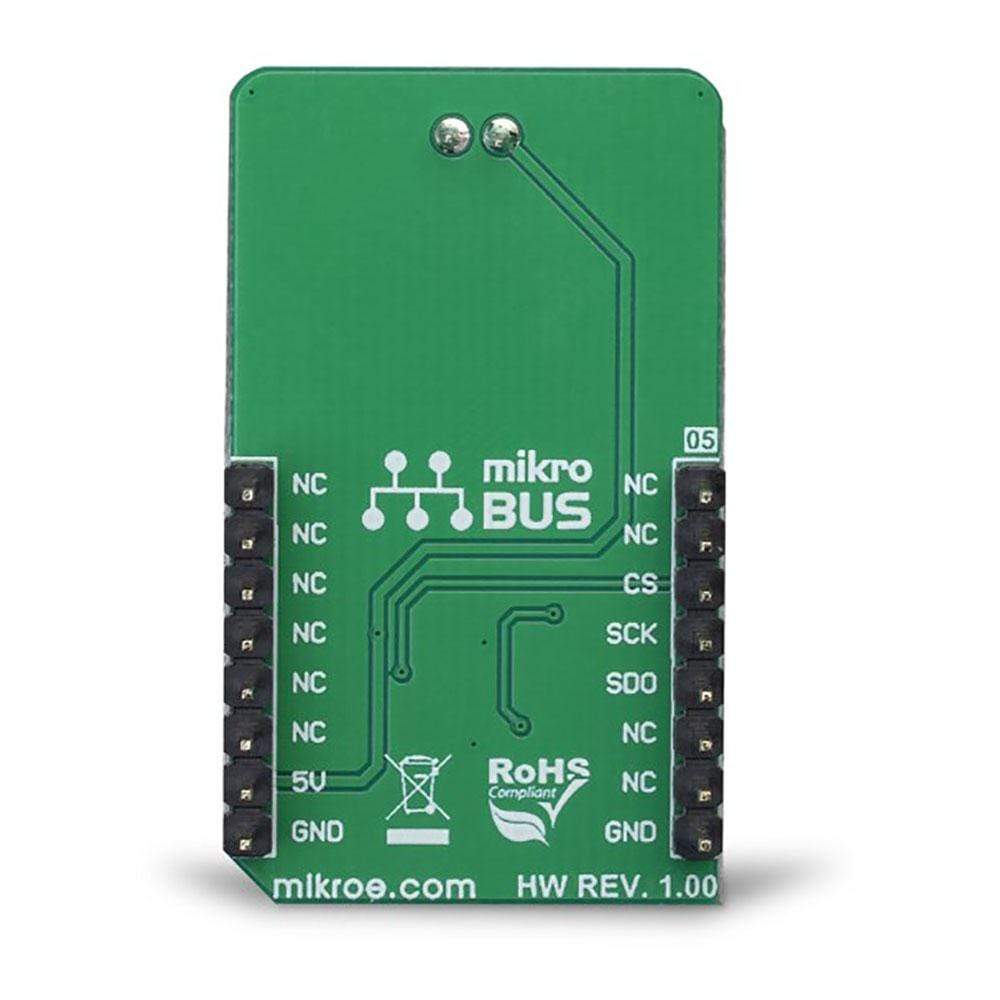
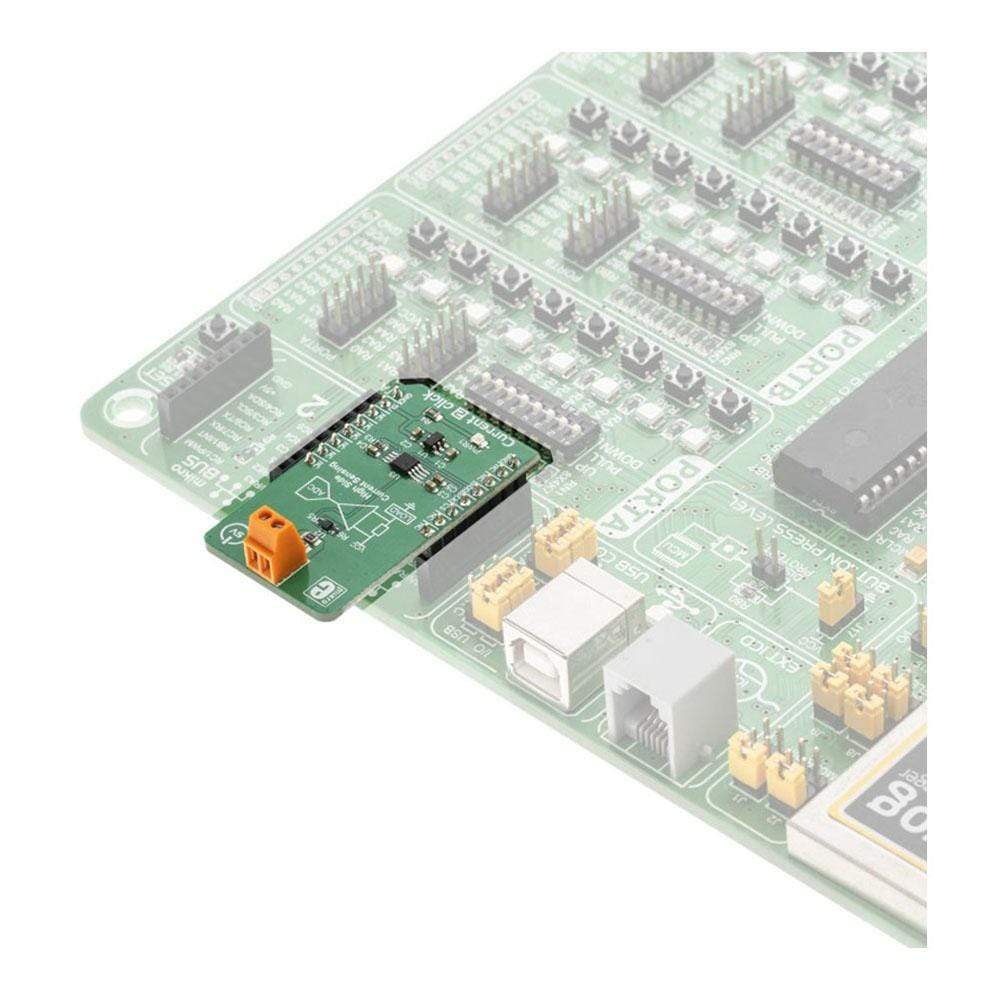
Overview
The Current 2 Click Board™ is an accurate current sensing Click Board™ suitable for very accurate measurement of the current through the load. It utilizes the high-side current sensing approach, which has a few advantages over the low-side current sensing. Current 2 Click Board™ is equipped with an integrated transimpedance amplifying circuit, designed specifically for low-power current sensing applications.
Designed to be used with a common-mode voltage of up to 6V, this Click Board™ is a perfect solution for battery charging monitoring, various battery gauges, and other similar low voltage applications that require simple and reliable current monitoring.
Downloads
Der Current 2 Click Board™ ist ein präzises Click Board™ zur Strommessung, das sich für eine sehr genaue Messung des Stroms durch die Last eignet. Es nutzt den High-Side-Strommessungsansatz, der gegenüber der Low-Side-Strommessung einige Vorteile bietet. Current 2 Click Board™ ist mit einer integrierten Transimpedanzverstärkungsschaltung ausgestattet, die speziell für Strommessungsanwendungen mit geringem Stromverbrauch entwickelt wurde.
Dieses Click Board™ wurde für die Verwendung mit einer Gleichtaktspannung von bis zu 6 V entwickelt und ist eine perfekte Lösung für die Batterieladeüberwachung, verschiedene Batteriemessgeräte und andere ähnliche Niederspannungsanwendungen, die eine einfache und zuverlässige Stromüberwachung erfordern.
| General Information | |
|---|---|
Part Number (SKU) |
MIKROE-3292
|
Manufacturer |
|
| Physical and Mechanical | |
Weight |
0.023 kg
|
| Other | |
Country of Origin |
|
HS Code Customs Tariff code
|
|
EAN |
8606018714094
|
Warranty |
|
Frequently Asked Questions
Have a Question?
Be the first to ask a question about this.

